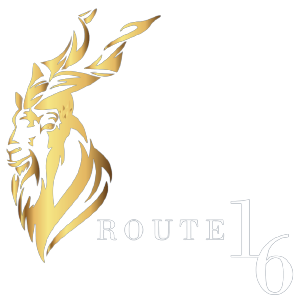Hunza
A Love Story
Hunza is my first love. From the tall forts that remind one of the years past, to the young girls with pixie haircuts playing football, holding the promise of the future, Hunza is a true love story that mesmerizes me every time I visit. Hunza has welcomed me with open arms and I wish to make it my permanent home.
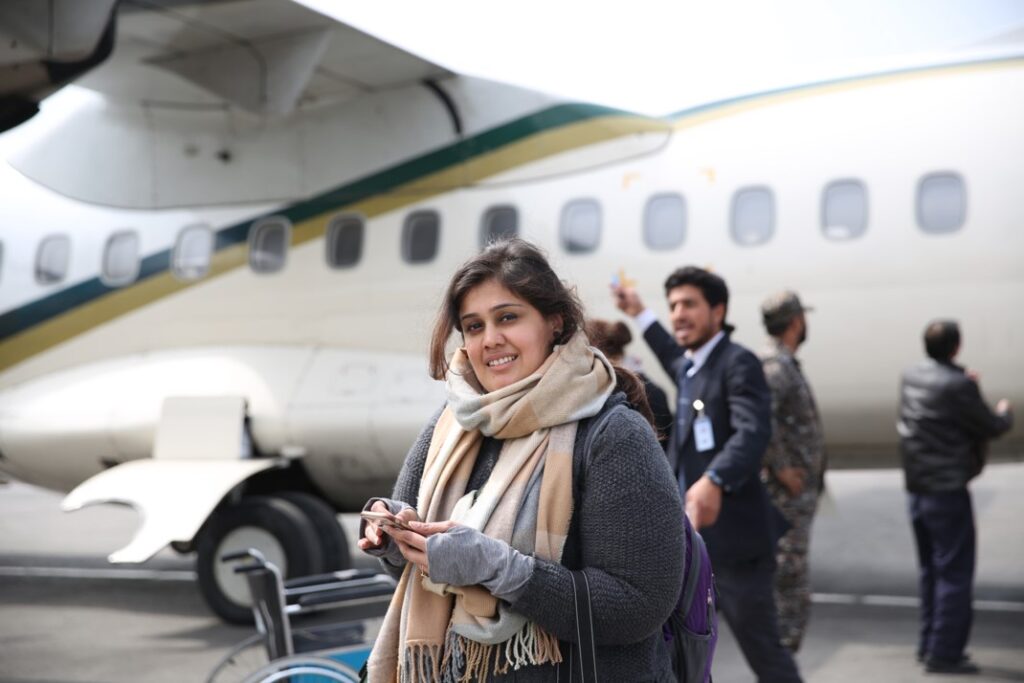
Sobia Maq
Co-founder
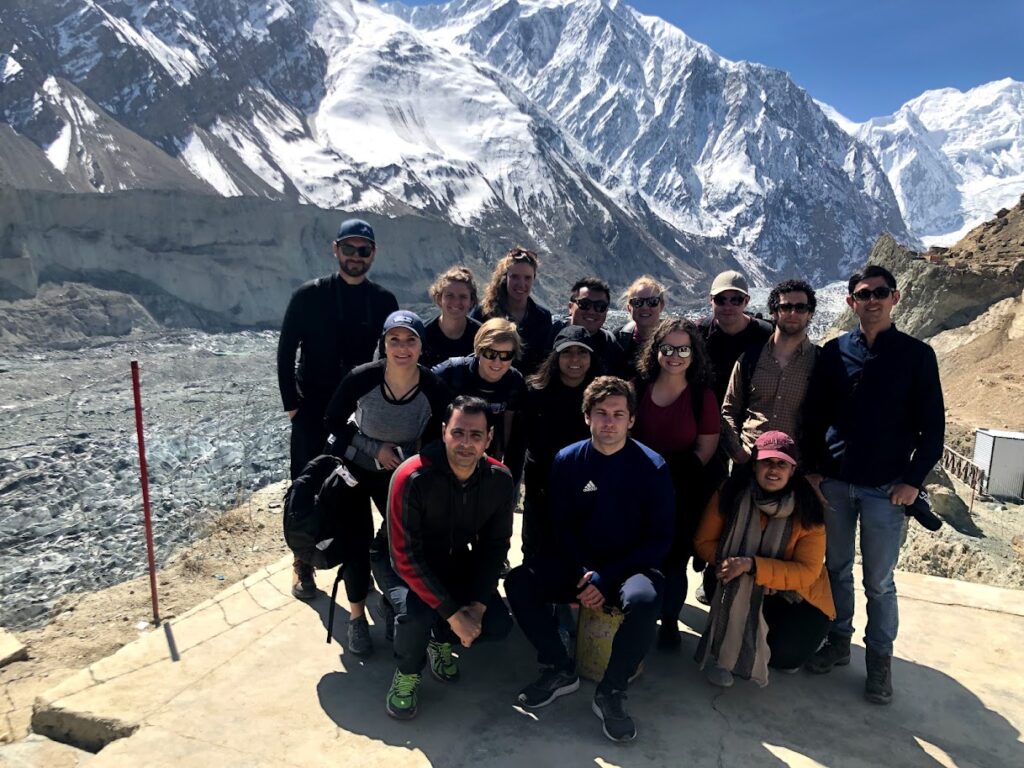
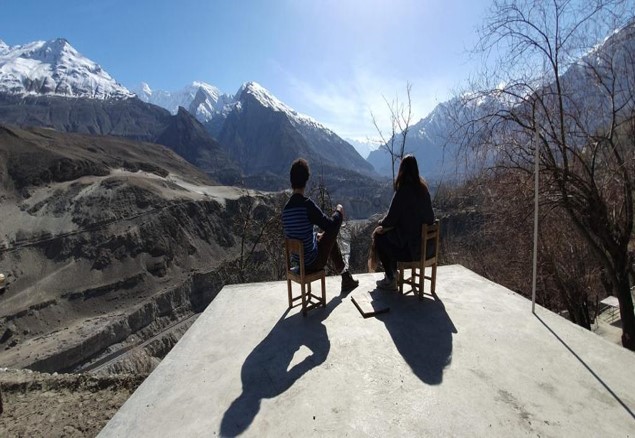
Hunza
Hunza is one of the most exotic places in northern Pakistan, or at least that’s what Sobia truly believes. It was formerly a princely state and the fairy tale-like forts of Altit and Baltit remind you of its history. So does the old silk route that one can view from the Altit fort – Hunza was central as a trading route from Central Asia to the subcontinent.
The Karakorum highway, built over a period of 20 years, traces many paths of the ancient silk route, and extends all the way from Hasanabdal in Punjab to the all-time favorite tourist spot of Khunjerab Pass in the north, where you can experience snow in summers as well!
There are a huge number of 7,000ers that one can view from the Hunza valley including Rakaposhi 25,551 feet (7,788 meters), Ultar Sar 24,239 feet (7,388 meters), Diran Peak (7,266 meters), among many others and the famous Lady Finger peak at 19,685 feet (6,000 meters).
Things To Do, See & Shop
Hunza is a tourist’s dream come true! From ancient forts to hanging rope bridges, turquoise lakes, the ancient silk route, staggering glaciers, local bazaars, it has something to offer for everyone. But this is only the tip of the iceberg.
Hunza has so much more to offer than what typical tour operators can show you and this is where Route16 comes in. We have developed strong ties with the community through our philanthropic work and can arrange home-stays, feed you fresh cooked home-meals, engagements with local artisans, among many other hidden treasures to explore!
To See
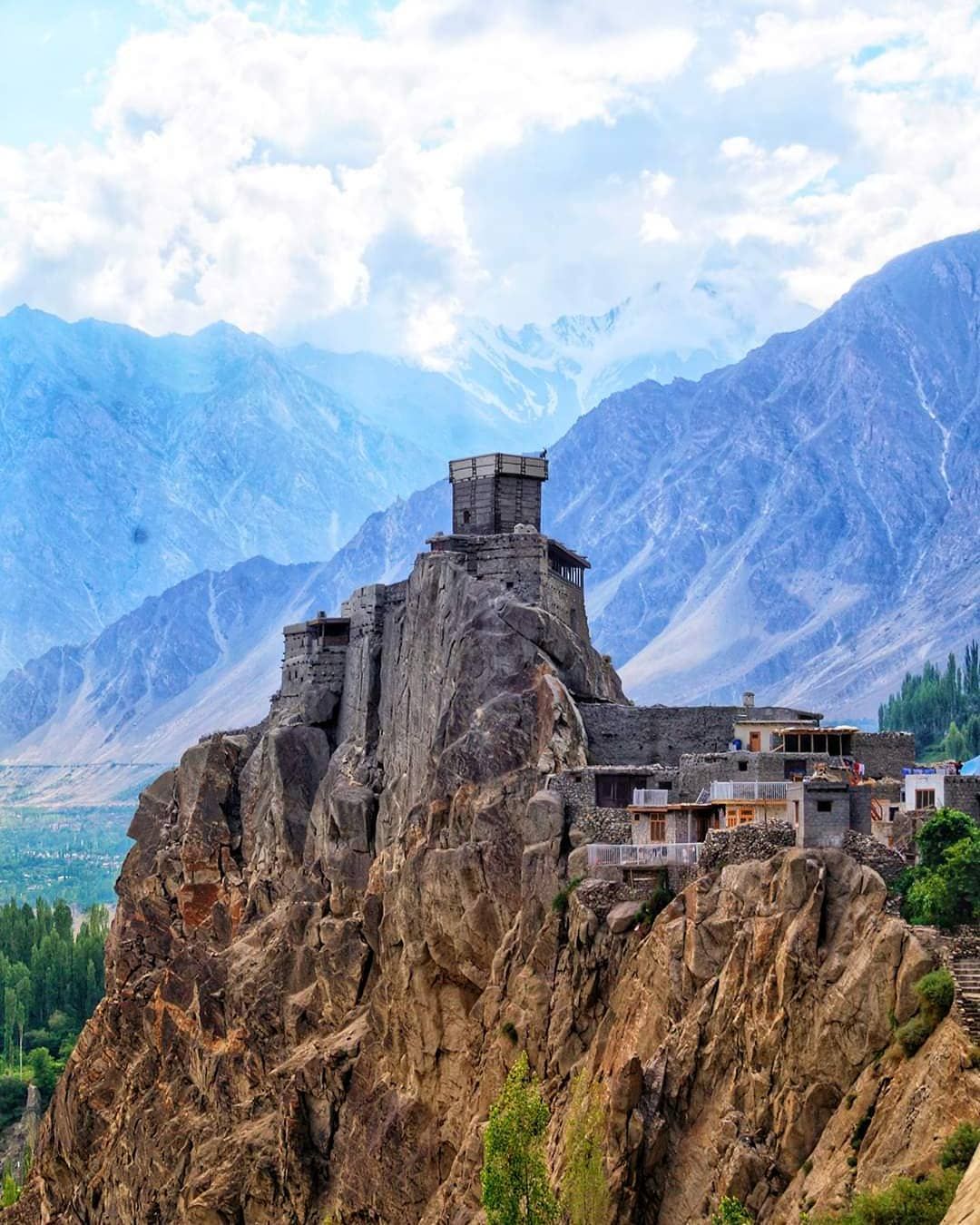
Altit Fort
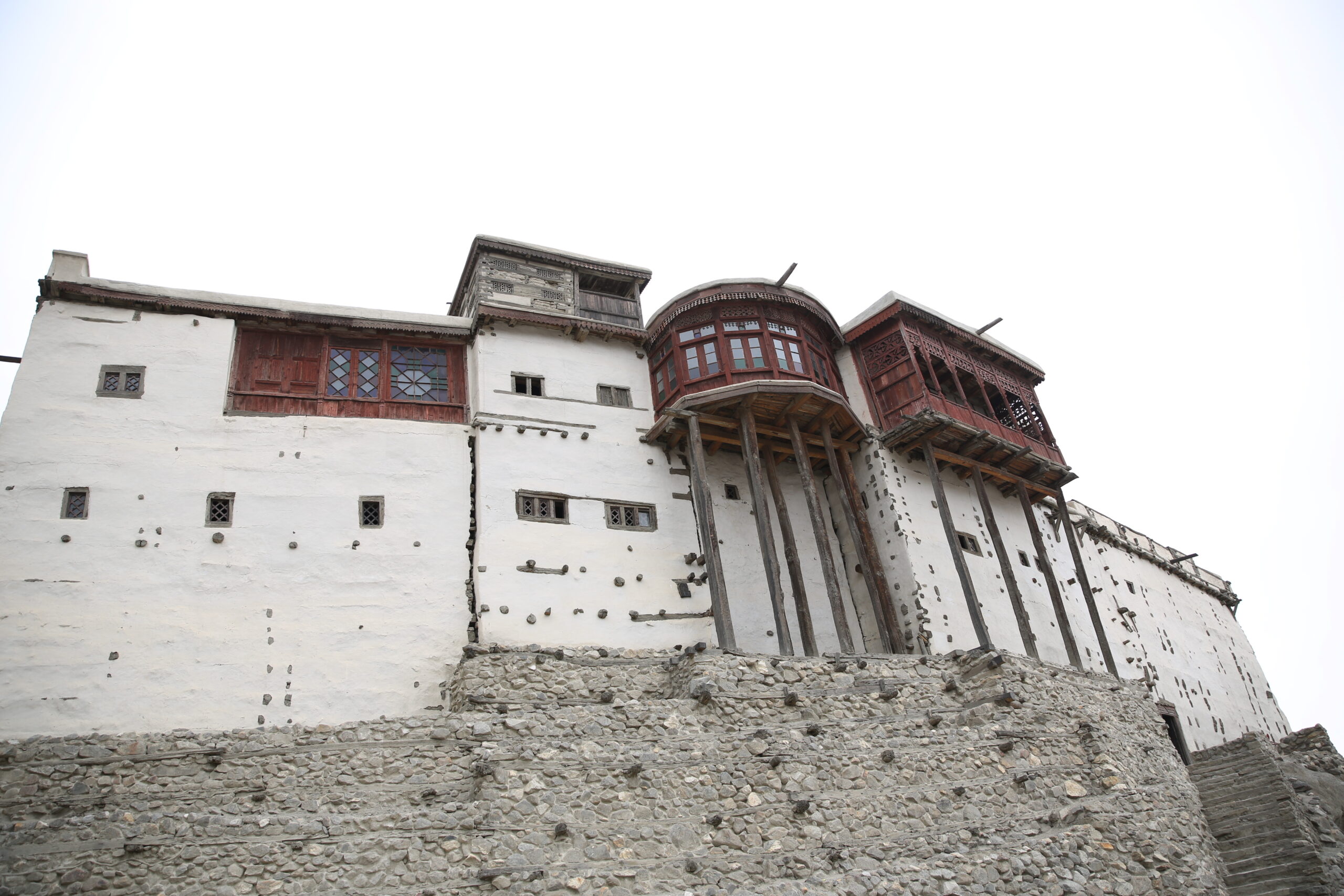
Baltit Fort
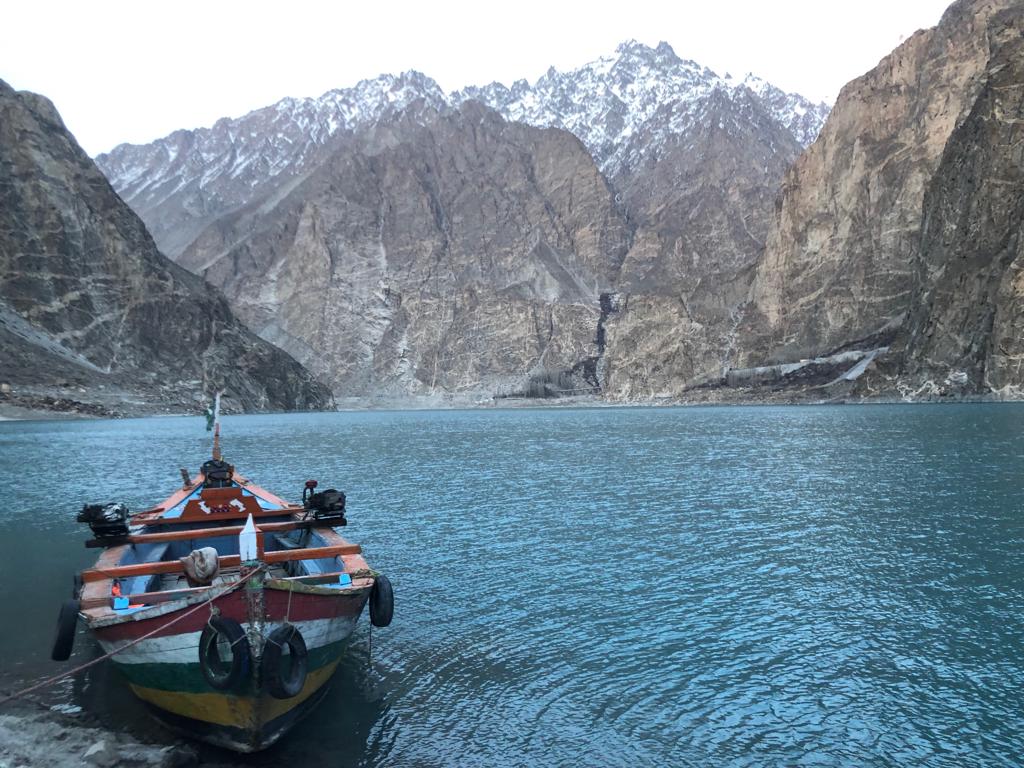
Attabad Lake
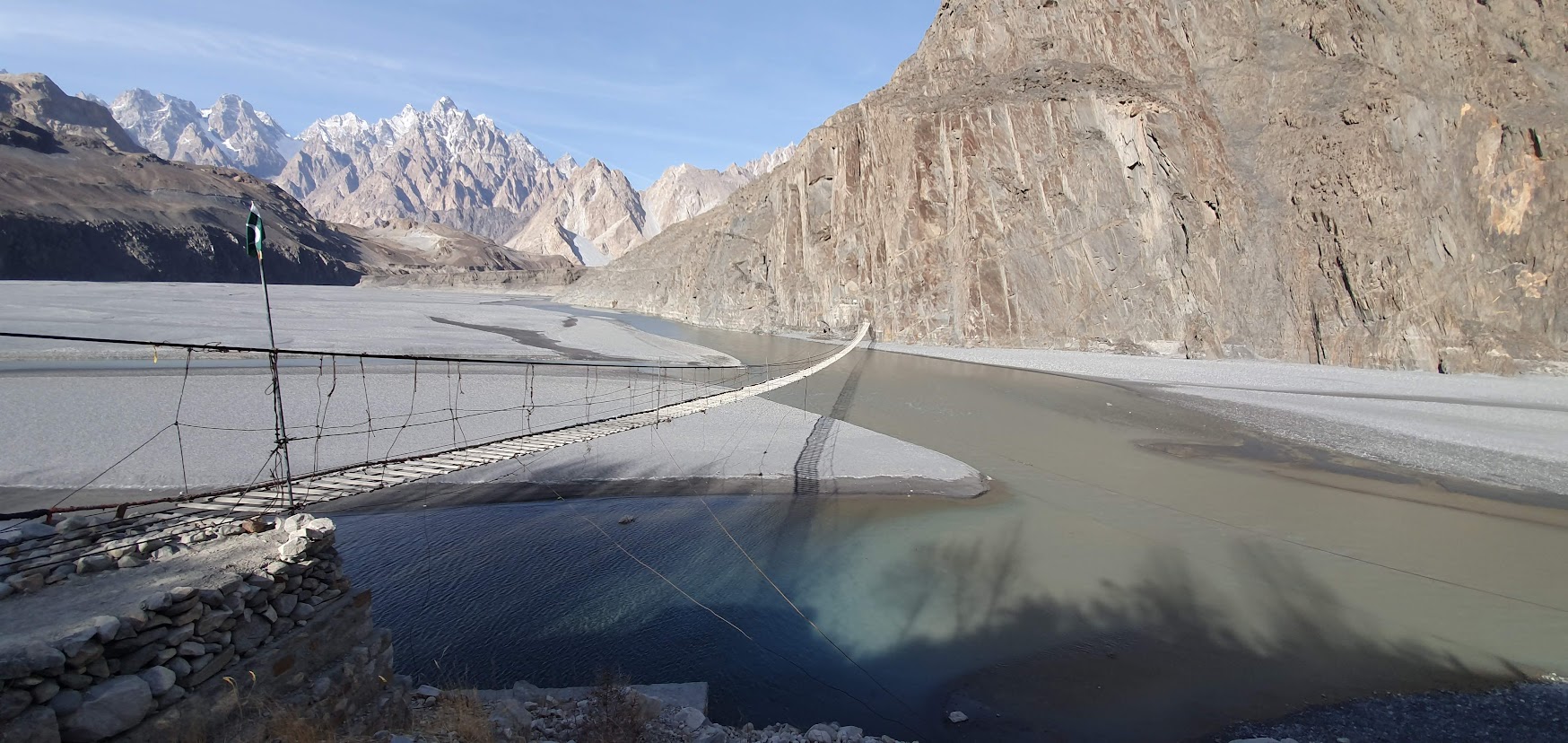
Hussaini Bridge
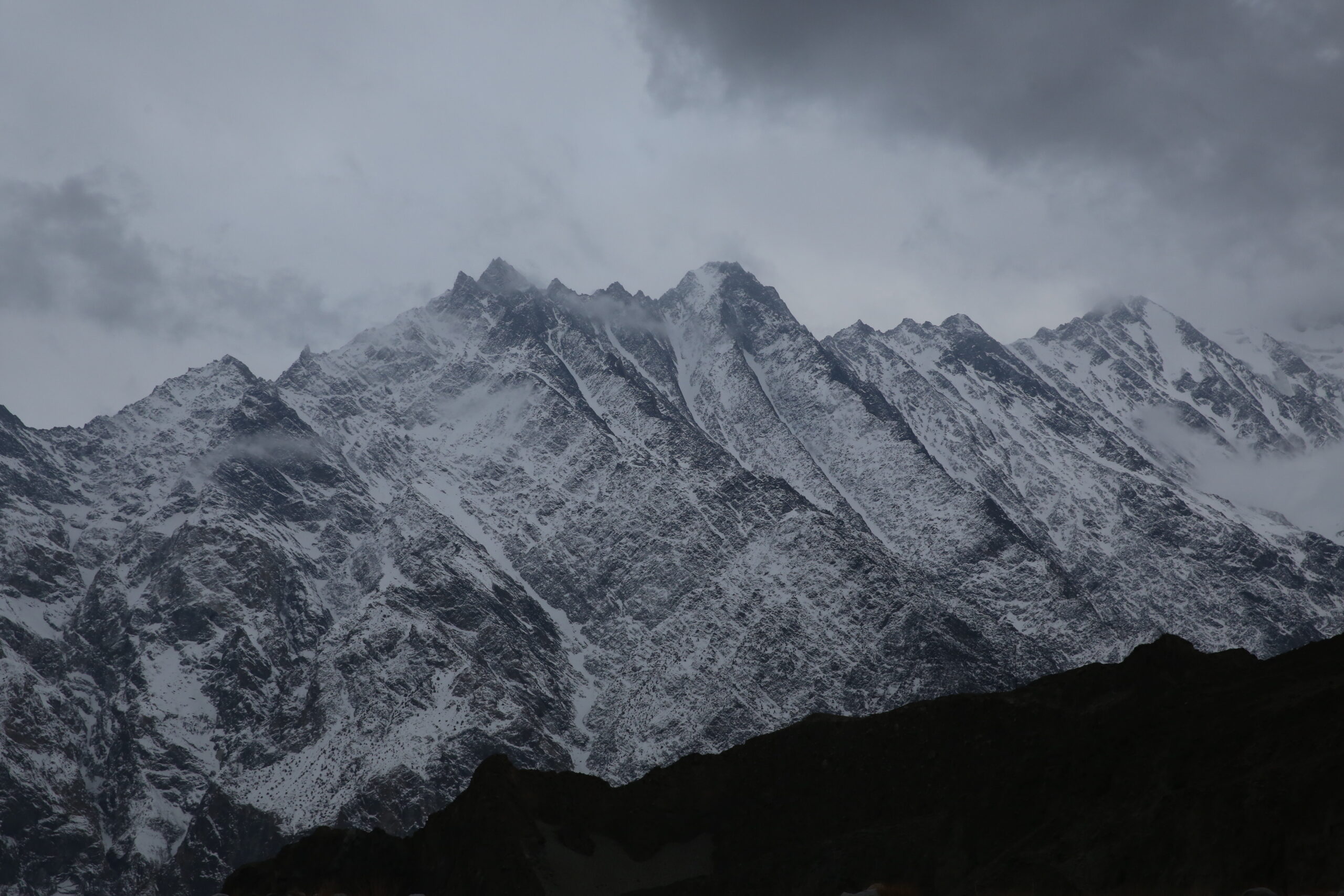
Passu Glacier
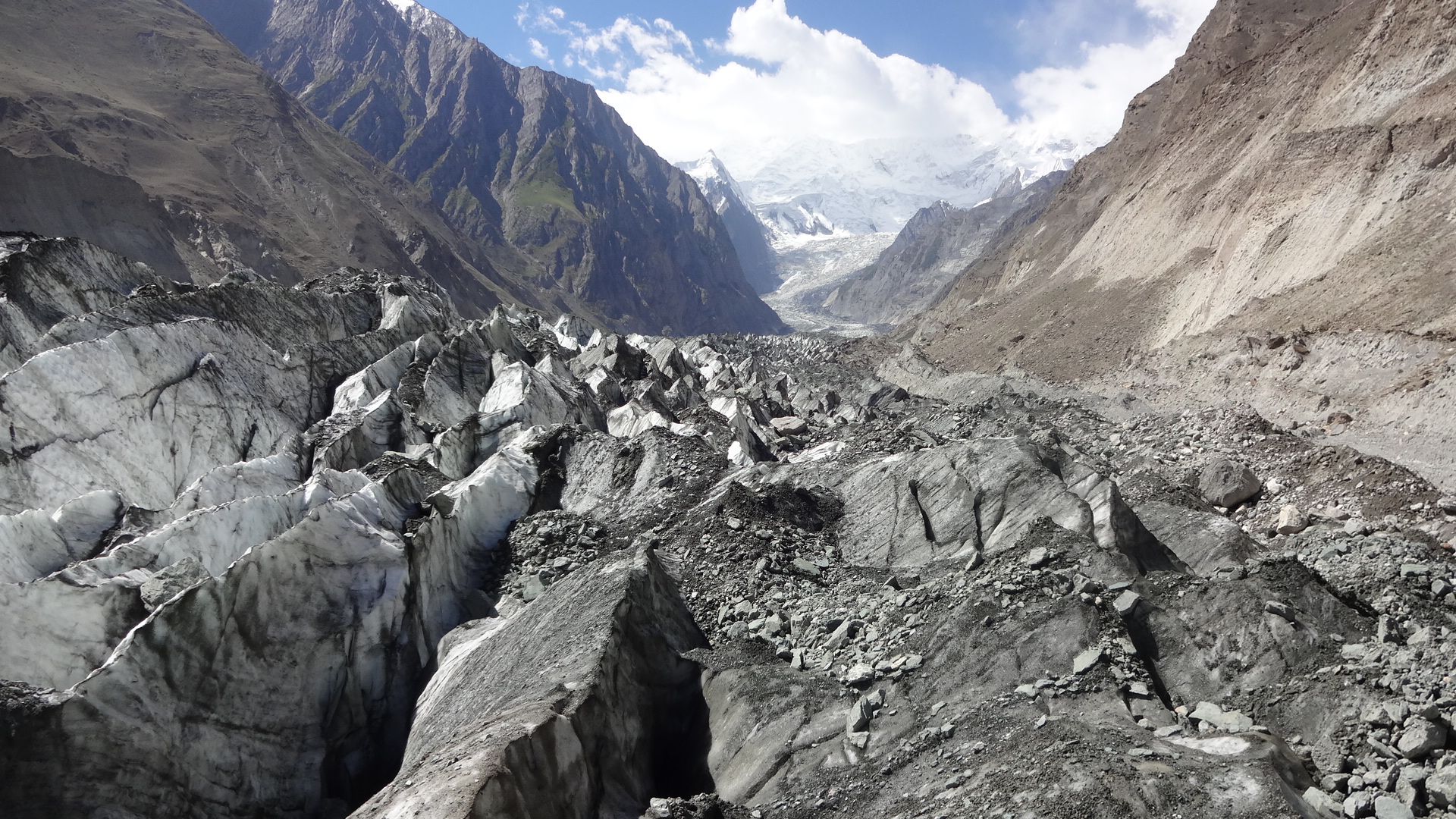
Hopper Glacier
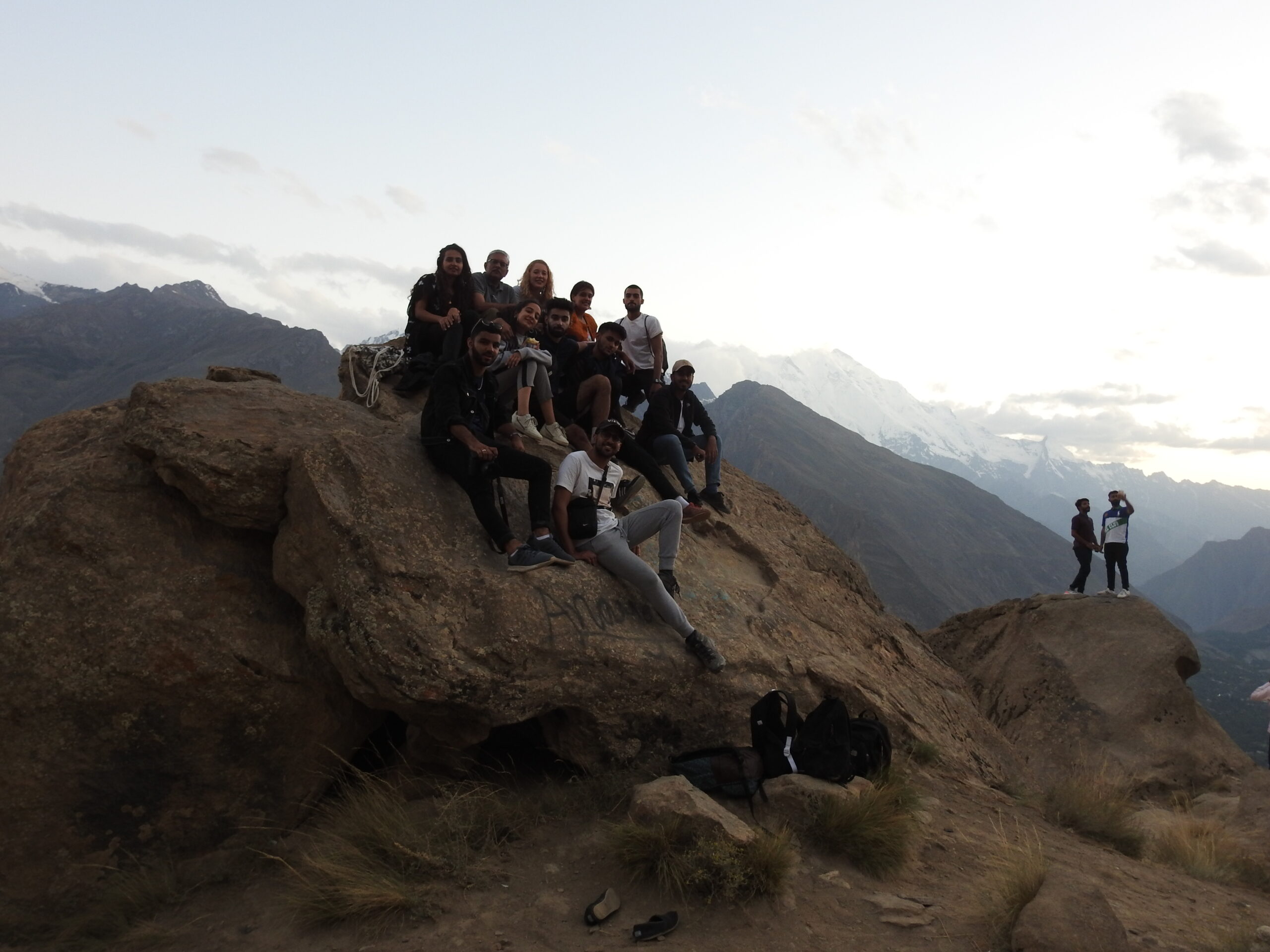
Duiker
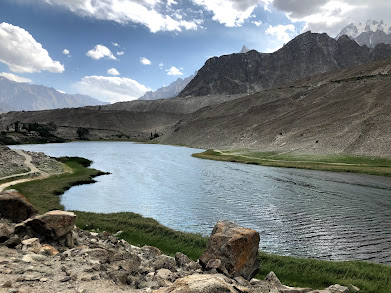
Borith Lake
To Do - Activities
Hiking - Treks from novice to extreme professional level.
Mountaineering- Rappelling - climbing all levels
Cycling
Community work
Exploring old forts
How To Get There
By Road
Hunza is about 13 hours’ drive by road from Islamabad during the summers when the Babusar top is open, and 17 hours on the Karakorum Highway. If you are traveling via Naran, it’s a beautiful road trip and can be done in a day or several days as there is much to see and enjoy on the way. This road goes over Babusar top which is snowbound from November to May and during this period one has to take the Karakorum Highway.
The first 3 hours’ drive from Islamabad is on the motorway and then the highway starts. The road due to landslides, snow and rain has broken patches throughout the way. Therefore, low clearance cars are not recommended.
On the way stopovers can be made at:
- Naran – a bustling tourist town, a bit of concrete jungle. While you’re here, you can go to Saif-ul-Muluk lake and als engage in a bunch of fun activities including white water rafting, hiking and fishing. Weather is very pleasant throughout summers but the nights can be very chilly.
- Piyala and Lulusar lakes – Piyala lake is a short 20-minute hike off the main road whereas Lulusar is by the roadside. A few hours stop over for tea and a photo shoot here is a great addition to your trip.
- Babusar top – at 13,700 feet, it’s a steep drive up and then down. Those not used to driving on the mountains must be careful of not over speeding and use brakes to the minimum as you descend. Brakes overheating and becoming ineffective is a common and real danger, so please be very careful.
Babusar has plenty of small wayside cafes serving fries, boiled eggs and other snacks. I particularly love anda (egg) pakoras. Walk away from the bustle to catch the breathtaking view of the valley around. It’s normally cold and windy throughout summer.
Other recommended stopovers to stretch out and eat are Mansehra, Balakot with nice outdoor seating restaurants short of Balakot town, Kiwai with seating inside the stream, Batakundi, Jaglot and Gilgit. Please note that most bathrooms along the way are unkempt.
The Karakorum Highway is an all-weather road open throughout the year – a longer and much more rugged route. A motorway is under construction and is built up to Thakot. The patch from Dasu to Chillas is 80% dirt road and very bumpy. Those out for adventure must take this route to experience the wilderness and raw scenery which will be lost with the advent of the motorway. Look out for the hot water springs short of Chillas. The roads can abruptly close due to landslides which normally follow heavy rain or snowfall. Though mostly roads open up within 48 hours.
We have personally done this road trip numerous times and are always mesmerized by it. Places to stop enroute are Abbottabad, Mansehra, Thakot, Besham. After Besham there is a desolate patch with stopovers mainly at Dasu, Chillas and Jaglot till you reach Gilgit and finally Karimabad. Care needs to be exercised between Besham and Jaglot.
| Hunza | Lahore | Islamabad |
|---|---|---|
| Hours - drive time | 17 hrs (via Naran) 19 hrs (KKH) | 13 hrs (via Naran) 15 hrs (KKH) |
| Kilometers | 935 km (via Naran) 1,060 km (KKH) | 600 km (via Naran) 725 km (KKH) |
By Air
The closest airport to Hunza is that of Gilgit – about 1.5 hours’ drive from Karimabad. It is a spectacular drive on the KKH once you get out of the airport.
There are 2-3 daily flights to Gilgit from Islamabad; during the tourist season. Pakistan International Airlines (PIA) operates ATR 42 aircraft on this route; which means that even with multiple flights, total seat capacity is quite limited.
All flights are subject to weather and there are frequent cancellations so be prepared for delays of up to a few days. Schedule and/or number of flights also changes with season. But it sure is a spectacular flight and worth getting a window seat.
Best Time To Go
As you travel north and the elevation increases, the weather keeps getting cooler. We believe the best time to go is from mid-march to early November. Afternoons are warm in June, July and August. Our favorite period is from mid-March to May and then September up to 1st week of November when trees are covered with spring blossom or autumn gold. Mid summer onwards there is plenty of excellent fruit that you can eat off the trees.
If you are planning a trip to Hunza, 4 days is an absolute minimum. But there is so much more to be explored in Hunza itself and then there are surrounding towns which are hitherto largely untouched by tourists! For instance, most people will walk a bit on the Hussaini bridge and return; there is however a community settlement to explore on the other side!
Accommodation
The hospitality sector is booming in Hunza and there is a wide variety of hotels available now that can fall within anyone’s budget. We prefer places with a character; something to offer beyond just a clean room & bathroom (which is an absolute must!).
It is sometimes the entrepreneurs running a place that make it so much more special and your evenings a joy. We know the best hotels in Hunza and can arrange a place of your liking!
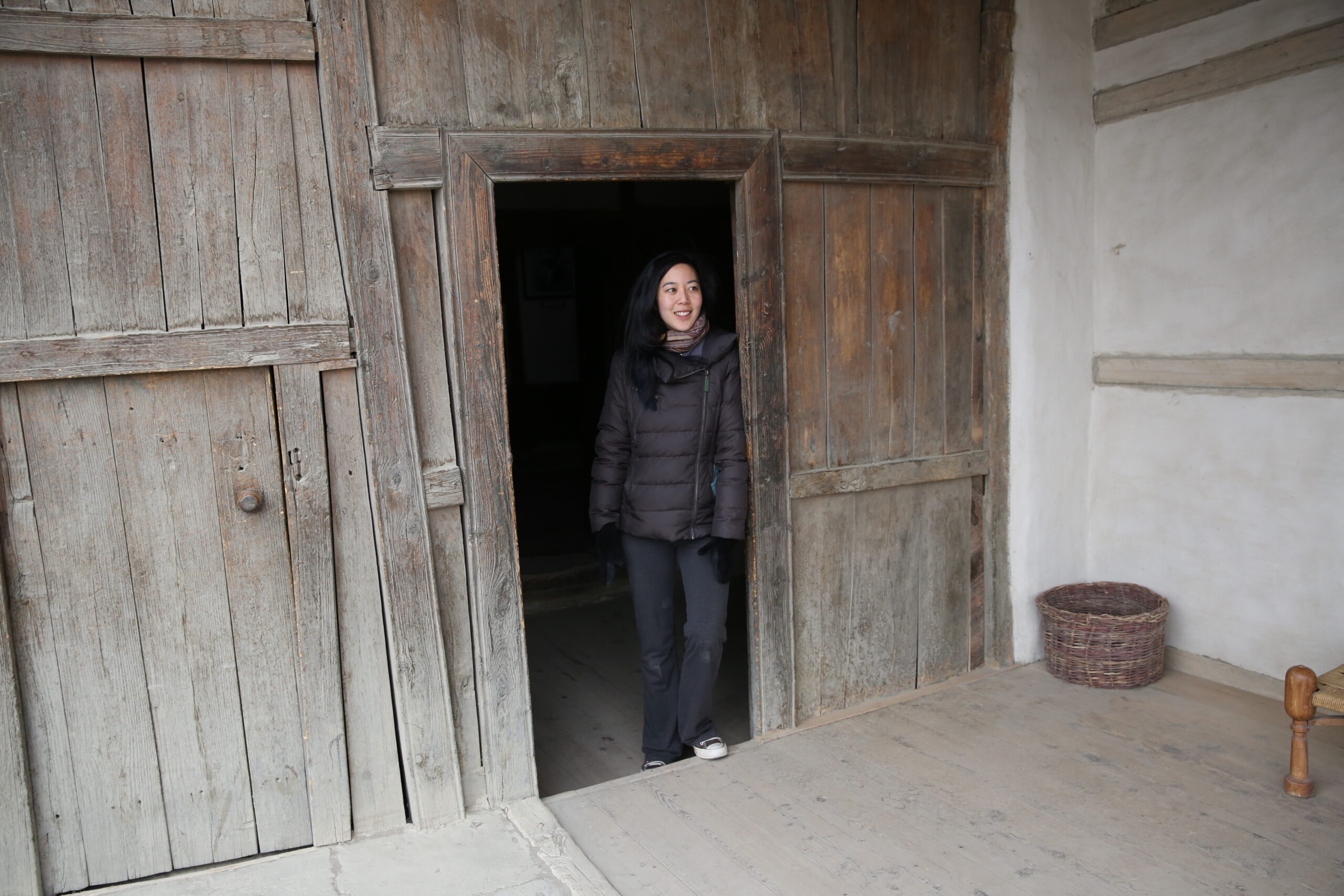
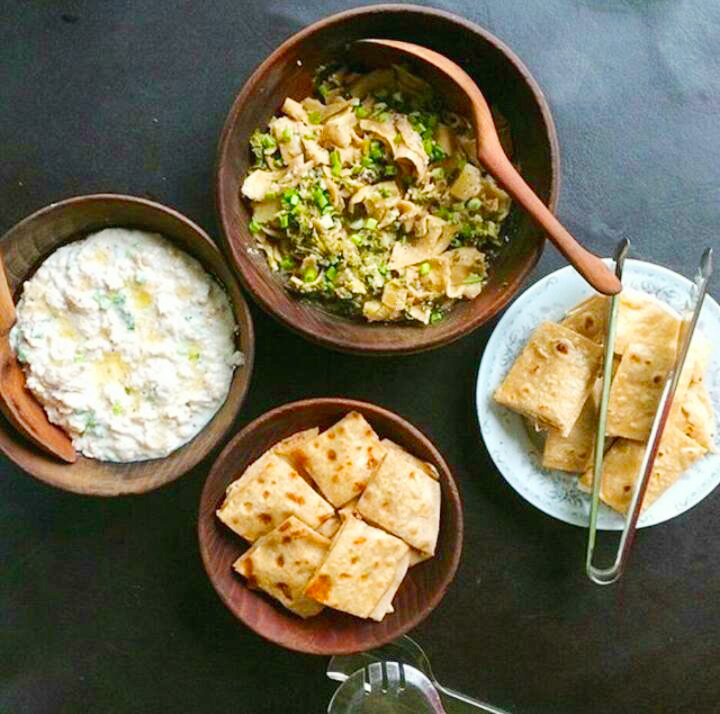
Food
Your visit to Hunza would definitely be incomplete if you did not try out the local cuisine. And what we personally really enjoy visiting are the various cafes run by the amazing women of Hunza.
From completely authentic local dishes to fusion food, Hunza will definitely cater to your taste buds. Following are must-try for us and we will tell you which restaurant offers the best version of each:
- Chapshuro – bread stuffed with chicken or beef
- Hoi lo Garma – variation of spinach lasagna
- Daudo soup – traditional soup with noodles
- Giyaling – traditional pancakes
- Diram Fitti – bread served typically with apricot oil
- Tumoro tea – tea made from Tumuro – a wild aromatic plant
